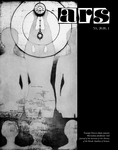
Časopis ARS 53 (2020) 1
Marta HERUCOVÁ
Andor Dudits a dozvuky preraffaelistických inšpirácií na jeho košickej maľbe
(Resumé)
In the Cathedral of St Elizabeth in Košice, there is a wall painting in honour of Francis II Rákóczi (1914 – 1916). Its author is Budapest painter Andor Dudits (*1866 – †1944). It belonged to one of the last works done on the theme of anti-Habsburg resistance in painting, which was popular from the lost revolution of 1848/1849 to the millennium celebrations of 1896 (Madarász, Than, Orlai Petrich, Benczúr, Elek de László, Stetka, Révész, Éder, Pataky, Greguss). Rákóczi’s grave was found in Thrace by Kálmán Thaly (1889) who initiated a transfer of his remains to Košice (1906). These, together with the remains of the ones close to him, were placed into the adapted northern crypt. The State Monuments Commission announced a competition to paint the adjacent northern wall of the transept. Besides Dudits, Dezső Kölber, Sándor Nagy, Sándor Novák, Rezső Raksányi, Octavian Smigelschi, Viktor Tardos Krenner and Zsigmond Vajda participated in it. Dudits won. He was a descendant of humanist Andrija Dudić of Orehovice (*1533 – †1589), and the son of a doctor Miklós Dudits. He studied under Luigi Rostagni in Budapest, at the Vienna and Munich Academy and at the Julius Benczúr’s Master School in Budapest. He made his debut in Munich (1890). At first, he painted genres (Courting, 1893, SNG Bratislava). During the preparation of the millennium celebrations he started to incline to historical painting (Francis II Rákóczi comes to the Ónod Diet, 1896, HM Budapest). The tendency towards Art Nouveau was reflected in the paintings in the Hungarian Parliament (1897) and in the designs of mosaics (1906, 1908). He cooperated with Pre-Raphaelism enthusiasts: Miksa Róth and Aladár Körösfői-Kriesch. Körösfői-Kriesch founded an Art colony in Gödöllő (1901) and published a book on Ruskin and Pre-Raphaelists (1905). Walter Crane exhibited in Budapest (1895, 1900). Among the exhibits of the first exhibition was his graphic of his own painting Bridge of Life, reproduced in Vasárnapi Ujság. Its concept and composition were used by Dudits when creating the painting in Košice. Both works relied on the iconographic model of stages of life. Dudits followed the style of his Art Nouveau work in the sacral space (Bačka Topola, 1908; Brezno, 1909). He made two designs for the Cathedral in Košice, 1908 (unrealized) and 1912 (realized with changes). The first was created together with the sculptor Ede Margó, orig. Morgenstern, and architect Koloman Lux, native of Bujakov, nowadays part of Brezno, and the second one on his own, as the second round of the competition was intended only for painters. The painting has three parts. In the lower is Rákóczi’s sarcophagus, in the middle milestones of his life and in the upper part the transfer of his remains to Košice. The middle part begins at the bottom with the figure of Jelena Zrinska, who protects little Francis in her arms, at the 1st stage (left) Rákóczi is as a teenage boy with the Archbishop of Vienna, Sigismund Kollonich, who sent him for reeducation to Jesuits after the imprisonment of his mother. At the 3rd stage he is among his companions, with whom he defied the Emperor, at the top are the closest to him – Miklós Bercsényi and Ádám Vay and he is depicted as the reigning prince on a horse; going down, at the 3rd stage, he leaves his country, goes to the French King Louis XIV standing on the 2nd stage, who, however, sends him by the gesture of his hand into the arms of Sultan Ahmed III standing on the 1st stage (right). Below, there are old Rákóczi with his secretary Mikes Kelemen, orig. Zágoni, who is writing memoirs. Their figures (in the final scene) face back from Jelena with the child (in the opening scene), just like the angel of death and the angel of life in Crane’s painting. There is a funeral procession in three consecutive scenes of the upper part of the painting. Figures in decorative robes carry three coffins, members of the State Monuments Commission and the Hungarian Academy of Sciences lead the procession (Gyula Forster, Kalmán Thaly, Vilmos Fraknói, Lajos Thallóczi, orig. Stommer, and Aurel Török, orig. Ponori Thewrewk), followed by church dignitaries (Bishop of Mukachevo Julius Firczák and auxiliary Bishop of Košice Augustin Fischer-Colbrie) and behind them the other mourners. In the background in the middle scene there is Hagia Sophia, symbol of Constantinople (Istanbul). Layers of muted earth colours of varying thickness with theatrically forced and stunned in movement figures, long draperies falling in rhythmic stores, repetitive gestures, and a golden background with clouds give the impression of a mosaic. There are (Böcklin like) dark trees on the edges of the central part; trees on the sides, but approached differently, are also in Crane’s painting. Jelena Zrinska with fluffy hairstyle and overall appearance, evokes a contemporary female ideal – Jane Morris, née Burden, the Pre-Raphaelite Muse. The references to the art of Pre-Raphaelites is also in the upper part: the funeral procession resembles the aesthetic tone of the wedding procession of Psyche, painted by Edward Burne-Jones.